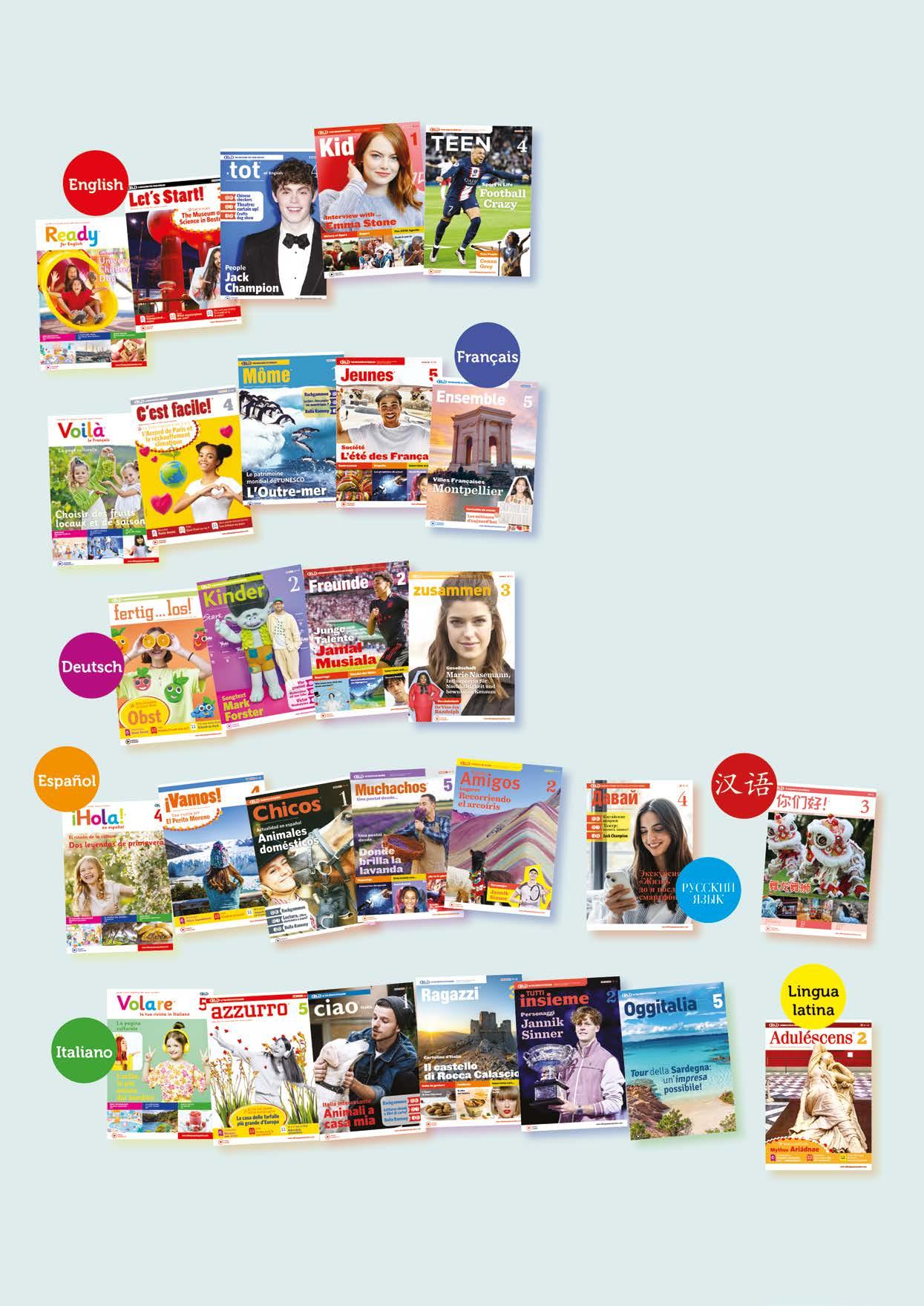TEEN
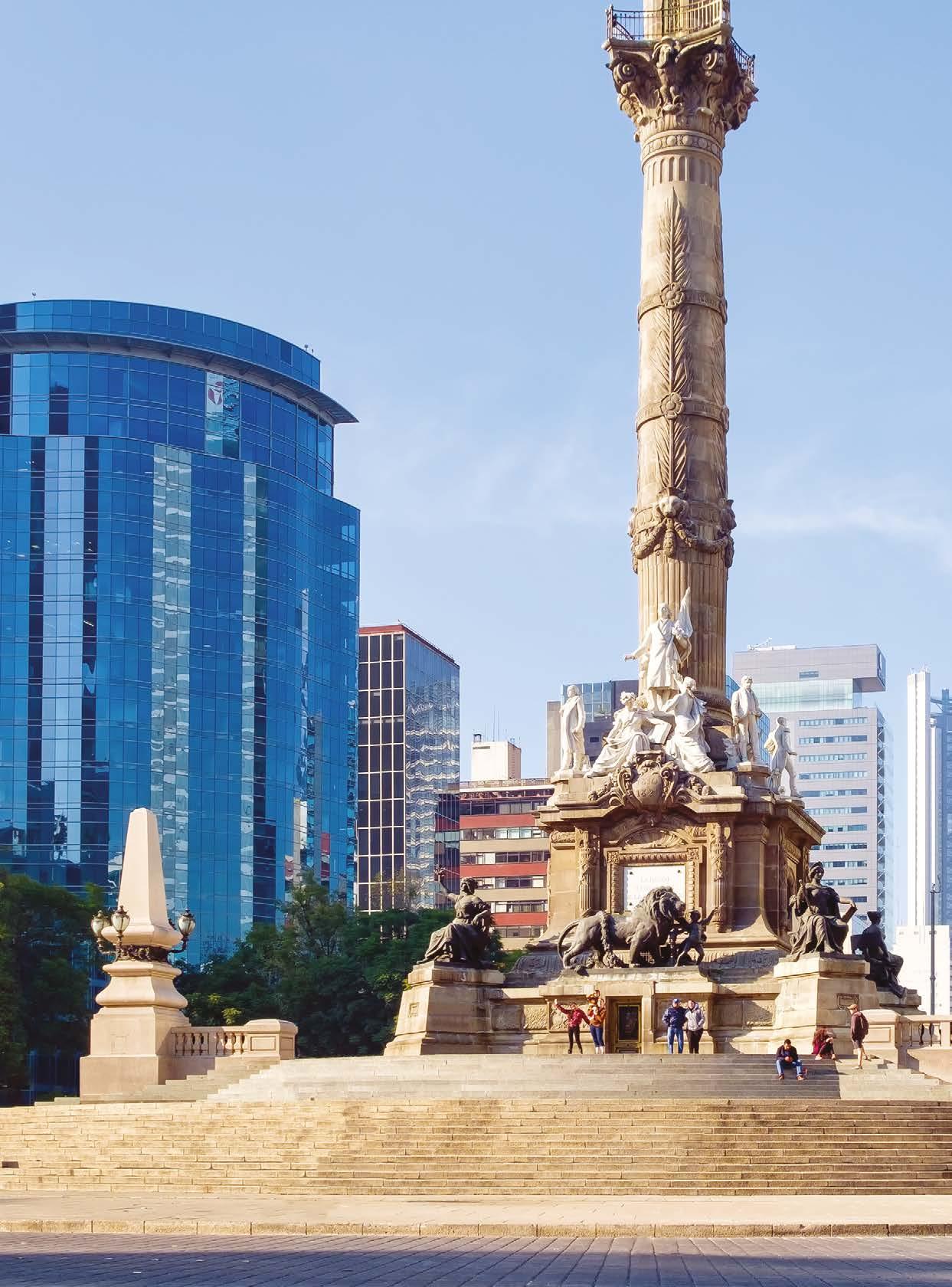


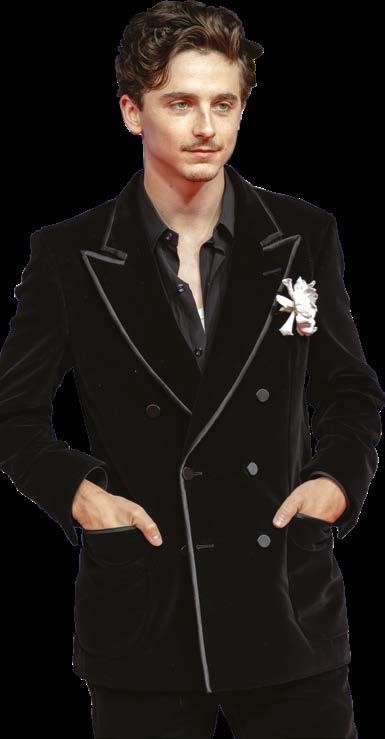
Common European Framework Intermediate Level (B2–C1)

Hi, I’m Grammy. In this issue look out for:
- adjectives
- compound adjectives
- simple present contrasted with present perfect
- passive
- conjunctions
- vocabulary of fashion, art and culture; medicine and neuroscience - expressions of time
Downloadable Audio FIles
Your subscription includes free MP3 downloads of the audio sections of all the magazines. Visit www.elilanguagemagazines.com
Teacher’s Notes
Subscribed teachers are able to download both the MP3 audio files and the Teacher’s Notes in PDF format.
NO PART OF THIS PUBLICATION MAY BE REPRODUCED IN ANY FORM OR BY ANY MEANS OR FOR ANY PURPOSES WITHOUT PRIOR PERMISSION. THE PUBLISHER IS PREPARED TO MAKE PAYMENT FOR ANY COPYRIGHT OF PHOTOGRAPHS WHERE THE SOURCE HAS BEEN IMPOSSIBLE TO TRACE. ALTHOUGH WE CHECK THE CONTENT AND SUITABILITY OF THE WEB SITES FEATURED OR REFERRED TO IN OUR MAGAZINES AT THE TIME OF GOING TO PRESS, WE ARE NOT RESPONSIBLE FOR ANY CHANGES WHICH MAY HAVE OCCURRED SINCE, AS THESE WEB SITES ARE IN NO WAY ASSOCIATED WITH ELI.
ELI srl, C.P. 6, 62019 Recanati, Tel. (071) 750701, Fax (071) 977851 Direttore responsabile: Michele Casali. Realizzazione testi: Liz Ferretti. Autorizzazione Trib. di Macerata N. 237/84 del 4 luglio 1984. Realizzazione: Realizzazione: Tecnostampa, Loreto © ELI Italy 2025
recognise: (here) know/ understand (the value of someone / something) vocation: job / career you feel strongly that you want to do aspects: (here) individual parts of a larger thing
prosperous: successful and with plenty of money
Welcome to a new year with Teen. In this issue we talk about an actor with a stellar career, visit the World Expo 2025 and find out which accessories young people can’t do without. We visit Mexico City, one of the great cities of the world, and, in the first of a new series called ‘Big Ideas’, we investigate the latest discoveries on exercise. Finally, we uncover the secrets of street art. All this with a fresh new look. As always, there are plenty of games and activities to help us on our way! So, let’s dive in…
Celebrated on October 5 every year, this day is a chance to recognise* the vital contribution that teachers play in educating each generation of young people.
Teaching is not just a job, it’s a vocation* that requires passion, dedication and skill. The day was established by UNESCO in 1994 to remind the world of the importance of teachers, and to raise awareness of the need to ensure quality education for all children and young people wherever they are in the world.
A specific theme is chosen every year which draws attention to particular aspects* of the education system, such as the continuous training of teachers, their safety in the workplace and the improvement of teaching conditions.
The initiative also invites governments to invest in policies that support the education sector, since good teaching is the basis of a prosperous* society.
1. World Teachers’ Day is celebrated annually on October 5th.

2. The day was established by UNESCO in 1984.
3. It celebrates the role of teachers in training each new generation.
4. Every year, the focus is on the training and safety of teachers.
5. The day is filled with events and activities in schools.
6. The day’s main aim is to encourage governments to support and improve teaching throughout the world.

Timothée Chalamet is the son of an American mother and a French father. Raised between New York City and Paris, he holds dual citizenship. This allows him to travel with ease between the two distinct cultures. His passion for acting began to show at an early age while attending the Fiorello H. LaGuardia High School of Music & Art and Performing Arts. After graduating from the prestigious* LaGuardia, often simply called “LaG”, Timothée briefly went to study at Columbia University and later, New York University. However, the pull of acting was still strong and he chose to leave his studies to follow his true calling*. His career began to gain momentum* in 2014 with a role in the television series Homeland, but it was the 2017 film Call Me by Your Name that made him into an international star. Since that time he has become an important figure in modern cinema.
Timothée Chalamet is a genuinely gifted actor, capable of playing a wide range of roles — from intense dramas to visionary science fiction — and has earned admiration from both audiences and critics. Following Call Me by Your Name, which won him an Oscar nomination for Best Actor, he continued to choose interesting and creative roles. He starred in the comedy-drama Lady Bird (2017), directed by Greta Gerwig, followed by Beautiful Boy (2018), in which he gave a heartbreaking performance that was widely praised. Known for his ability to fully inhabit complex characters, he has taken on significant roles in major films, including Dune by Denis Villeneuve, where he plays the lead, Paul Atreides. His ability to play such different characters combined with his screen presence have earned him the respect of many of the world’s most esteemed* filmmakers.
In 2024, Timothée Chalamet portrayed Bob Dylan — one of the twentieth century’s most influential musicians and a cultural trailblazer* —

Timothée Chalamet is an actor of outstanding talent. He’s also a young man with a sense of purpose who doesn’t hide from the sometimes hard realities of our times. Let’s get to know him.
Name: Timothée Hal Chalamet
Place and date of birth: New York, December 27, 1995
Profession: actor
Distinguishing features: played the lead role in a film about a musical icon
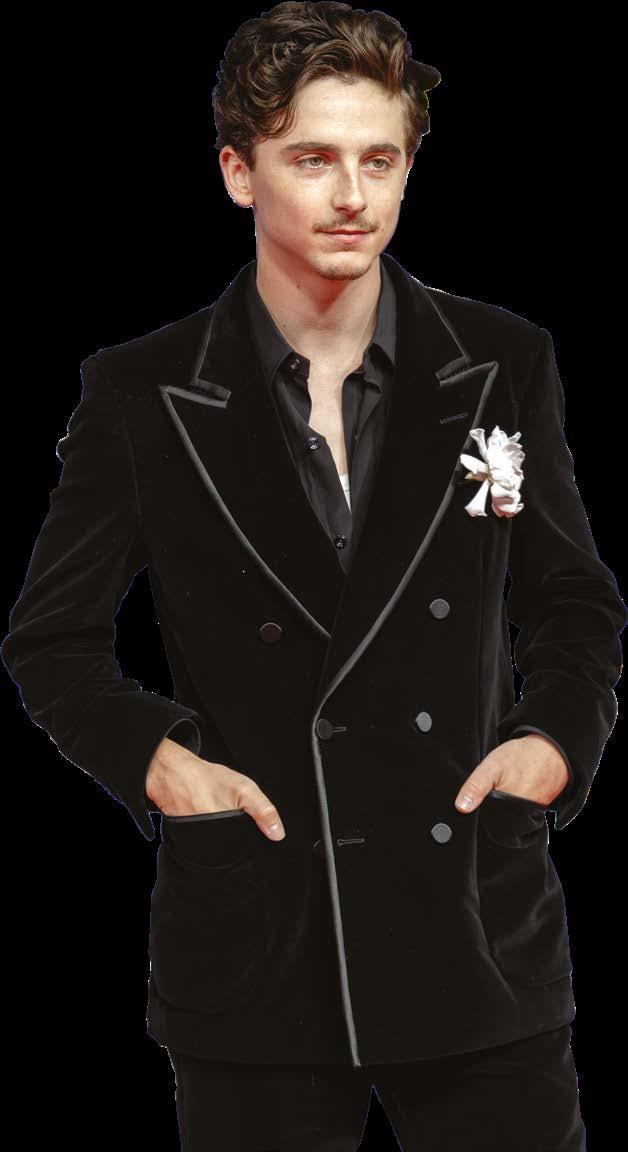
A Complete Unknown, directed by James Mangold. The film captures a turning point in Dylan’s career, that is also often described as a defining* moment in popular music. Set in July 1965 at the Newport Music Festival in Rhode Island, New England, the story follows Dylan’s controversial* transition from acoustic folk to electric rock. The film has been praised for both its strong narrative — a powerful reflection on a pivotal* period in musical and cultural history — and for Chalamet’s extraordinary performance. His acting is so good that you might forget you’re watching a film, almost feeling instead as though you’re time travelling! Playing Bob Dylan so brilliantly is further proof of Chalamet’s talent for bringing diverse characters to life.
Timothée Chalamet has always shown himself to be thoughtful and sensitive — not only in his acting roles but also in his beliefs and professional conduct*. “I believe the true definition of success is being passionate about what you do,” he once said in a widely shared interview. He is also vocal about environmental issues and actively supports efforts to combat climate change. “We must all recognise we’re approaching a critical tipping point*,” he warns. At the same time, he stresses the value of humility: “I try never to be at the centre of everything and to stay grounded. I never want to forget my roots.” This combination of self-awareness and modesty is what continues to make him so well liked by both fans and those he works with in the film industry.
prestigious: important, well-known and with a good (here, noun) vocation, strong pull to do something momentum: force that keeps an object moving once it has started multifaceted: having many different parts or sides esteemed: that people think very highly of trailblazer: person who is
the first to do something defining: extremely important, that shapes other things controversial: that creates public argument and disagreement pivotal: central, that changes what comes after it conduct: behaviour tipping point: point in time when change happens that you cannot stop
In this year’s Teen we’ve got a new series of articles on great cities. We’ll be visiting important sights, finding out about traditions and food, and discovering the way of life in five amazing cities around the world. Our first port of call* is Mexico City.

Welcome to South America’s biggest city. This megacity of nearly 23 million people is vibrant*, exciting and built on layers* of history. Let’s take a trip into the colourful streets of the ancient capital of the Aztecs.
The official name of this amazing city is Ciudad de México. Ciudad is the Spanish word for city, and Mexico? The word Mexico comes from Nahuatl – the language spoken by the Aztecs before the Spanish arrived in the sixteenth century. No one is quite sure what it means, but some say it means the ‘place at the centre of the moon.’ There is a good chance this is correct – the Aztecs believed their city to be the centre of the world. The name of this amazing city gives us a strong clue* about its modern character – it’s a powerful combination of both Aztec and Spanish cultures. Today, you might see the city’s name abbreviated* to CDMX. There’s Nowhere Quite Like It…
One of the first things to understand about Mexico City is that it’s sinking*! In some places it sinks up to 25 cm every year. The
reason for this is another clue into the city’s history. The Aztecs built the centre of their world in the 1300s on a shallow* lake high up in the mountains. The Spanish arrived and drained* the lake, then built their heavy buildings on top of the Aztec city. The lake was dry but the ground was still soft... Two of the city’s must-see* sights, Palacio de Bellas Artes (Palace of Fine Arts) and the Metropolitan Cathedral have been stabilised* with advanced engineering techniques to stop them falling down.
When you walk through the historic Spanish colonial centre you are literally walking on history – beneath your feet is the ancient Aztec capital. Find out more about pre-conquest civilisations at the Museo Nacional de Antropolgía (The National Museum of Anthropology). It’s one of the world’s greatest museums and key to understanding Mexico’s extraordinary history. You can still explore some of the Aztecs’ canals in the barrio, or district, called Xochimilco. Take a boat trip with friends past chinampas – the city’s floating gardens built above the lake using reeds*, and buy your lunch from a floating food stall.

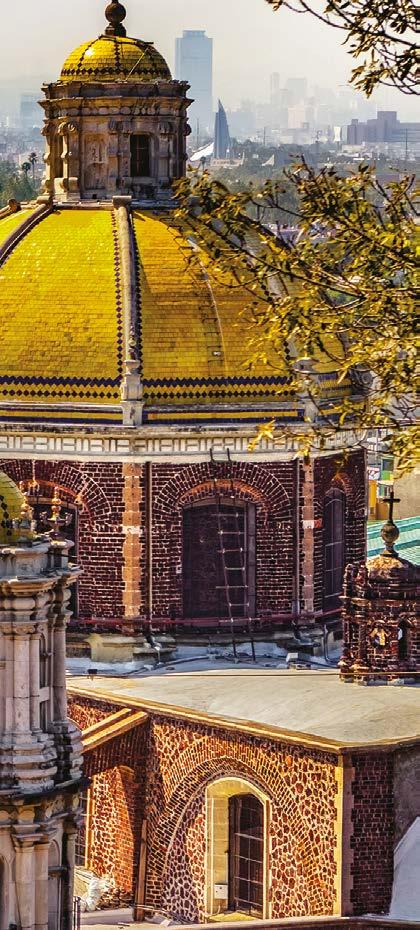
The Metropolitan Cathedral was built on top of the Aztec’s temple to Huitzilopochtli (god of war and sun) and Tlaloc (god of rain and fertility). Today, you can visit the excavated* “Templo Mayor” and its museum full of Aztec artefacts.
Tacos of course! In Mexico City this food has been raised to the level of an art form. Tacos are made with a round flat bread, called a tortilla, made from maize or wheat flour, which is folded or rolled around a filling. Fillings are often pork or chicken and can be spicy*. Chilangos – a name the people of Mexico City sometimes call themselves

compound
The Aztec name for CDMX was Tenochtitlán and it was the capital of this once-great* civilisation. By 1500 it was one of the world’s largest cities, and just like Venice, was built around a network of canals.
like spicy food. You may even find chilli powder in their sweets. Many people buy tacos from street stalls, where they add sauces and lime juice, before eating them straight away. For breakfast look out for tamales (filled, steamed maize dough) and a drink called atole – a traditional drink made of cornflour, water and spices such as vanilla and cinnamon.

This city has more museums than any other city in the world, covering art to technology, history to revolution. Two artists are closely associated with Mexico City – Diego Rivera and Frida Kahlo. The work of artist Diego Rivera is on display in a special museum but also in large murals* around the city, which, combined with a vibrant graffiti culture, make the streets colourful. And there is another colour to look out for – bright blue. These are the walls of the Casa Azul, the blue house. This house museum celebrates the life and work of artist Frida Kahlo. It’s a magical place where visitors are free to immerse themselves in Frida Kahlo’s world.
CDMX is a city with a special atmosphere. Its streets are sometimes chaotic, and the whole place can feel busy, but on Sundays some of the main streets are closed to cars, lorries and

buses and are opened up to bicycles, scooters and rollerblades, giving you the chance to explore the city at a slower pace.
first port of call: (idiom) first place a ship stops during a longer journey vibrant: full of life, noise and colour layer: something that lies over / between something else clue: information that helps you understand a problem abbreviated: made shorter sinking: moving downwards shallow: not deep drained: (here) removed the water from
must-see: (adj.) that you must see stabilised: (here) stopped from sinking reeds: tall plant, looks like grass, grows at the edge of lakes spicy: hot flavour, made using chilli mural: painting that covers a wall once-great: (adj.) that was great at one time excavated: uncovered, dug out

An artificial island, a virtual metropolis, bold visions of sustainability and innovation… We explore some of the most compelling ideas and projects shown at Expo 2025 in Osaka.
Between 13 April and 13 October this year, the world gathered in Osaka, Japan. Held on an artificial island called Yumeshima, Expo 2025 stood as a powerful symbol of international cooperation and technological developments. Centred around the theme “Designing Future Society for Our Lives”, the exhibition welcomed more than 28 million visitors from across the world. With over 150 countries officially represented, along with dozens of international organisations, the Expo was an opportunity for discovery, dialogue and optimism in a period of global uncertainty.
The site was organised into three main thematic zones — health, life and the planet — and was built in a circular pattern that encouraged visitors to reflect on humanity’s collective* future. The Japanese pavilion, widely praised as one of the most memorable of the event, was an immersive* and poetic experience focused on the ever-changing relationship between tradition and innovation.
A particular highlight was the digital twin of the island of Yumeshima. This digital twin was a cutting-edge* virtual city developed by Japanese and international partners. This visionary project could be explored through VR headsets and mobile devices, enabling people worldwide to experience the Expo remotely.
The virtual space mirrored* the real-world event with extraordinary accuracy. The digital space allowed
users to engage with avatars, attend workshops, and even buy blockchain-certified* digital ‘objects’. The virtual pavilions were a significant step towards making global events more democratic by giving more access than ever before to those unable to travel. This digital twin showed the power of technology to create inclusive*, interactive and truly global shared experiences
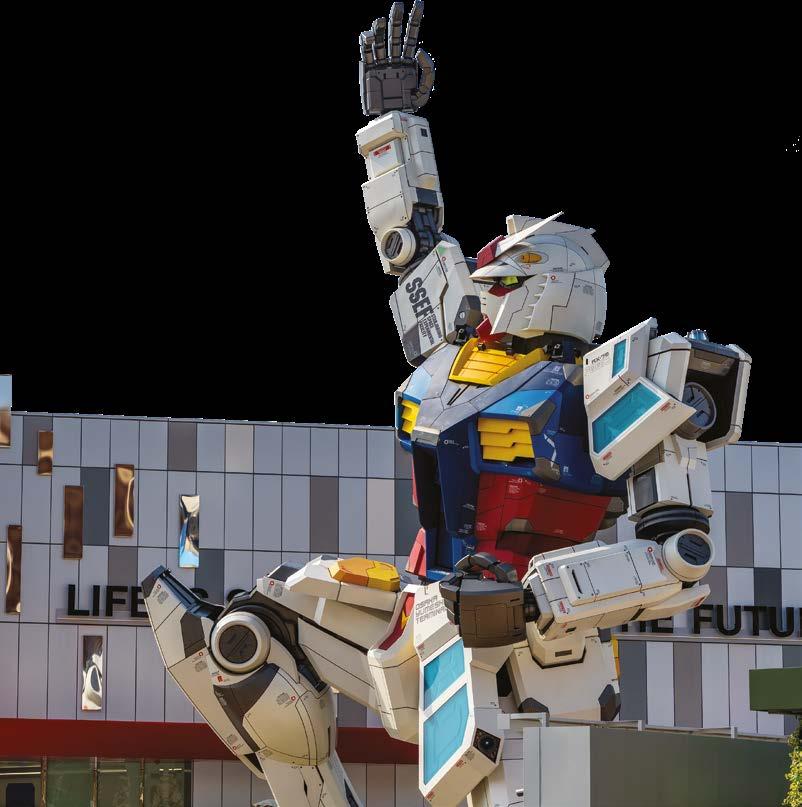

The official mascot*, Myaku-Myaku, is a creature made of red cells and blue water, and capable of transforming into various forms. Its name comes from a Japanese word that symbolises the continuous beat of life.
In the Norwegian pavilion sustainability met the latest technology in the form of Ocean Farm 2050. This was an aquatic greenhouse powered entirely by renewable energy. Ocean Farm is a closed-loop*, self-sustaining ecosystem growing algae, molluscs and fish, all managed through artificial intelligence to ensure the perfect living conditions for each species. Visitors could watch the operation in real time through an underwater viewing gallery. Ocean Farm 2050 showed the incredible potential of marine environments as future food sources and started important conversations around sustainable aquaculture. Unsurprisingly,

The official symbol of the Expo is a huge circular wooden structure, 20 metres high and 2 kilometres long, designed by architect Sou Fujimoto. It is the largest wooden construction in the world, recognised by the Guinness Book of Records.

it became one of the most visited and photographed exhibits at the
Among the most talked-about innovations on show at the Expo was the BioSuit, on display for the first time at the Italian pavilion. This prototype biotech suit, developed by the Polytechnic University of Milan in collaboration with the European Space Agency and aerospace industry partners, was originally designed for Mars exploration. It has now been adapted* for use on Earth in extreme environments, for rehabilitation*, and in emergencies.
With its user-friendly design and builtin biometric sensors, the suit was a big hit with visitors. Live demonstrations of the BioSuit throughout the Expo involved both athletes and patients, and showed how it could transform lives. The BioSuit is a perfect example of the Expo’s mission: to use science to make significant improvements to human lives.
the odd one out.
Choose from the characteristics below and fill in the gaps to make your own pavilion. What else would you add?
Theme: environment, AI, social problems, space
Style: traditional, futuristic, modern, serious, unusual
Colours:
Message: hope, the need for action, peace, inclusivity, social justice
Other characteristics:
Finally, the Kenyan pavilion inspired audiences with its “Digital Savannah”. This is a decentralised*, AI-driven education project designed to reach remote rural areas. The project uses small, solar-powered devices that are connected to a global learning network. Learning content is adapted to each individual learner’s level and language to provide education that is genuinely inclusive of everyone, wherever they are. Expo visitors could explore interactive learning modules, talk to educators, and hear powerful stories from young people who, thanks to Digital Savannah, were able to access higher education for the first time. The project was awarded the Expo’s prestigious “Innovation for Humanity” award. It left a lasting impression on those who believe in the power of education to improve lives.
collective: people working as a group / together
immersive: images and sounds that seem to surround the viewer cutting-edge: (adj.) newest and most advanced mirrored: reflected (as in a mirror)
blockchain-certified: (adj.) digital object / document made secure so that it can’t be changed (a bit like a fingerprint) inclusive: including all types of people and treating
them fairly closed-loop: (adj.) continuous cycle – system where output feeds back into input adapted: changed to fit (a new situation) rehabilitation: training / therapy programme (that brings you back to health) decentralised: that’s not controlled in one central place mascot: person / character that brings good luck to an event

In this new series we look at big ideas in science, technology and engineering that are changing the way we think. In the first article the focus is on the science and neuroscience of fitness.
You might think you can only get better grades by sitting and studying for hours, but there’s more to doing well in your exams than you might think. Let’s take a closer look.
We’re so used to hearing about how we need to do more exercise that it might come as a surprise to know that for centuries the developed world forgot the
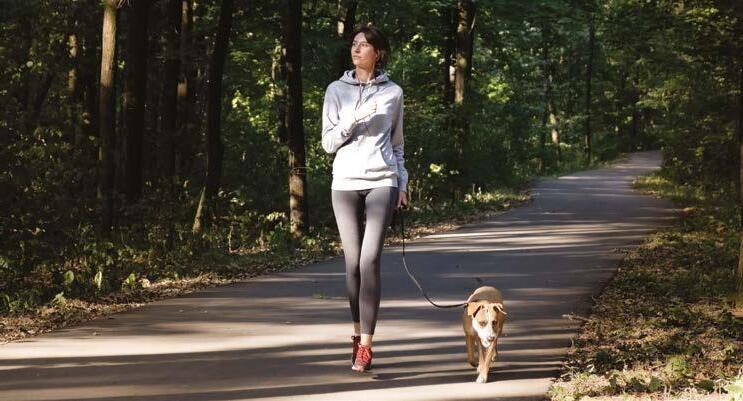
end of the twentieth governments began to promote physical fitness more seriously. As a result, there was a boom in activities such as jogging and
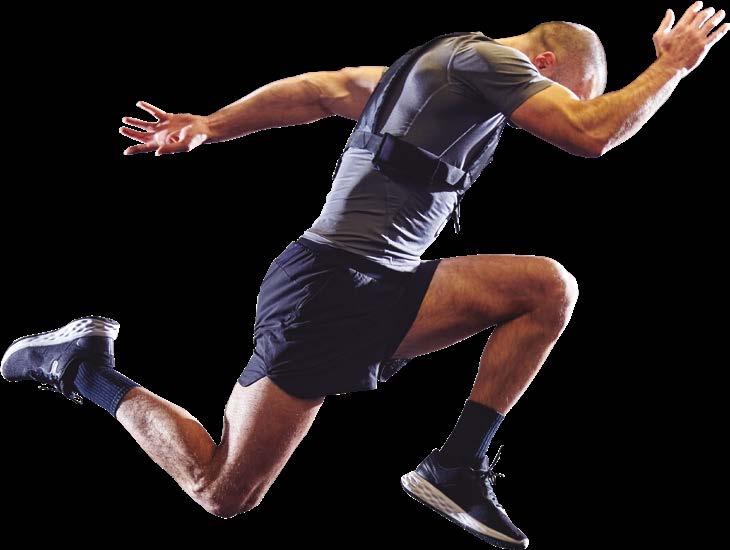
the focus of these health campaigns for decades. But over the last fifteen years,
and molecular biology techniques have revolutionised our understanding of exercise. We now know that in addition to staying fit and preventing ill health, it’s vital for brain health and mental wellbeing. Did you know that regular exercise can be more effective for mild to moderate depression than taking antidepressants*? And, there is even evidence that exercise can make us more intelligent and perform better on cognitive* tasks!
Scientists make a distinction between two types of exercise – chronic and acute. Chronic is physical exercise done regularly and consistently* over longer periods of time – say weeks, months, and years. Acute


Recent research shows that if you’re too busy to exercise during the working week then it’s ok – doing at least one and a half hours of intensive exercise at the weekend is just as good.
Got a stressful test or important meeting coming up?
Lower your stress levels and improve your performance by doing intense exercise, such as a brisk ten-minute walk or a few minutes of HIIT, beforehand.
exercise refers to short bursts* of more intense activity. These can last from a few minutes to a couple of hours. What are some examples of this? Well, chronic exercise might be jogging or running four times a week, cycling to work daily, going swimming three times a week or a brisk* walk – i.e. walking at least 4 km per hour – for 45 minutes on five days in the week. Acute exercise could be something like a 20-minute run round the park, ten minutes of HIIT (high intensity interval training), a half-hour dance class, or a game of basketball with friends.
Chronic exercise is good for overall*
health. It can improve your sensitivity to insulin, making you less likely to develop diabetes*, and prevent other metabolic diseases. It improves heart health, so helping to avoid cardiovascular* disease. And of course it’s good for general fitness and endurance – which is your strength over time.
Acute exercise has become an increasing focus of scientific research. It will get your heart pumping. That, in turn, increases blood flow round your body with all the benefits that brings. But there’s something else. Exercise, and acute exercise in particular, increases production of certain hormones in our bodies.
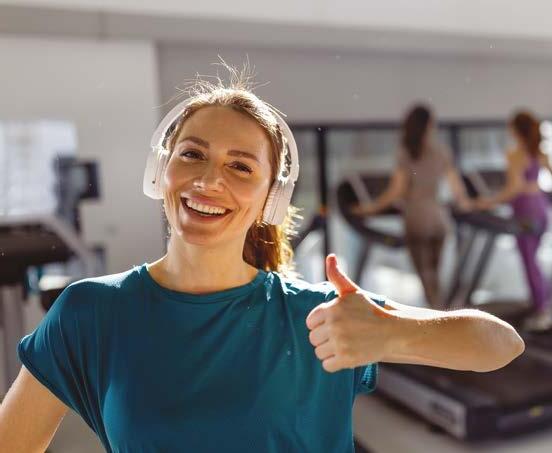
Examples of chronic – regular, longer – exercise
Examples of acute – short and intense – exercise
Answer the questions about your exercise habits – include any time you move, such as walking to the bus, or any sport you do.
How much exercise or sport do you do in an average week?
Is it mostly regular activity or done in shorter, more intense bursts?
Are there any changes you would like to make to your routine?
How do you feel after doing exercise?
Hormones such as endorphins, dopamine and norepinephrine – the last two of which also act as neurotransmitters, send signals in our brains.
What do endorphins do? These are the body’s natural pain relief. They’ve been shown to lower stress, improve mood and increase wellbeing. Dopamine is a neurotransmitter that plays a vital role in the brain’s reward system*, as well as improving attention and focus. Norepinephrine, also called noradrenaline, is a hormone and neurotransmitter that makes you feel more awake, and improves attention and focus. On top of that, it’s involved in how we make and retrieve* memories. So what does this mean? If you add all of this up, it leads to the inevitable* conclusion that exercise can help with our studies, exams and work, more than we ever realised.
aerobics: exercise that makes your heart beat faster anti-depressants: medicine used to help lower depression cognitive: to do with thinking, understanding and learning consistently: in a way that does not change bursts: sudden, intense activity brisk: quick and energetic metabolism: the chemical
reactions inside the body overall: including everything diabetes: when the body has difficulty controlling blood sugar levels cardiovascular: to do with the heart and blood vessels reward system: system that helps maintain wellbeing retrieve: find again inevitable: that cannot be stopped / avoided
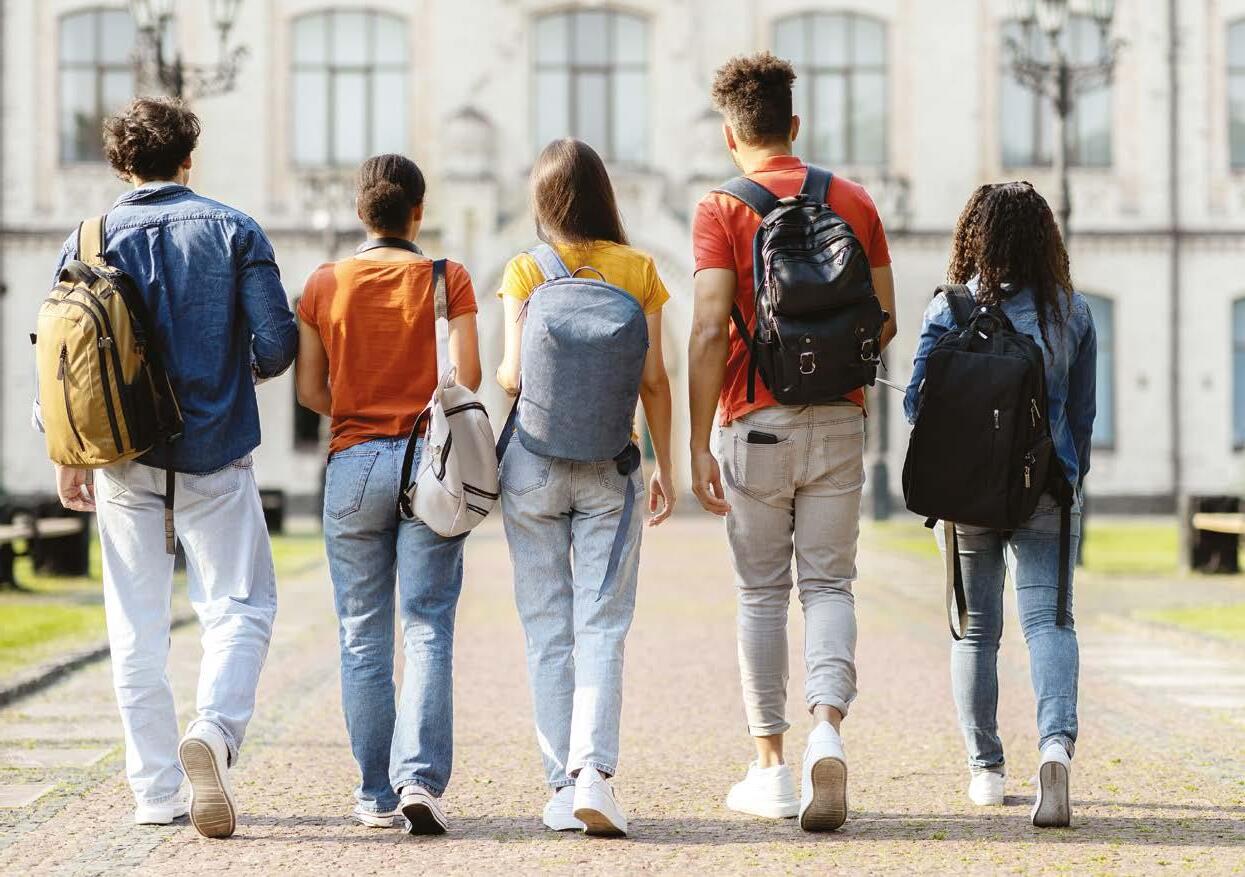
If you really want to understand someone, then take a close look at their accessories. Many young people pay great attention to the items they choose to wear or carry with them. Let’s explore this further.
For today’s younger generations, accessories are far more than just fashion items – they’re a way to express themselves and to feel connected*. Every item that is chosen says something about a person’s identity and their place within a social group. Mobile phones are at the centre of this. They can be used as a status* symbol, and as a way of letting those around you know the kind of person you are. And it’s not just about the make and model of the phone, the choice of case or cover is important too. While these are designed to protect your phone from accidental damage, they’re often customised*. With so much choice available, they can be an easy and fun way to show your personal style and preferences to the world.
Another accessory that’s always close at hand is a pair of headphones or AirPods. Music plays a major role in young people’s day-to-day lives. These useful gadgets* allow you to immerse* yourself in your own personal musical world. You could even say headphones and AirPods have an extra-special significance for those that use them regularly. Music allows you to connect with your own feelings, as well
as with other people who like the same artists – headphones and ear buds* are the key to opening all this up. Smart watches are another popular choice, especially for tracking physical activity. Their appeal lies in the way they blend the latest technology with an interest in health and fitness.
Bracelets, necklaces and rings can play an important role in helping develop a personal style. Whether the jewellery is made from expensive materials is less important than if these items follow the latest trend – from rope bracelets to chunky* chains, or minimalist designs that can be layered* and customised. Jewellery is an important way for an individual to express their unique style. But beyond fashion, it may also carry deep emotional meaning. It’s common for friends to exchange items of jewellery and this turns simple accessories into tokens* of connection and affection.

We mustn’t forget the allimportant bags and backpacks. These are chosen with care –


often based on brand or design – to hold both practical and personal items, such as mobile phones and wallets, but much more. Bags and backpacks can be called the ‘containers’ of our private world. If you pay careful attention, you may get some idea about the psychology behind the choice of bags and other accessories. People often like to appear individual, while at the same time showing they belong to a group with shared interests and values.
Accessories are not only useful – they reflect fashions and trends. Items like sunglasses, hats and scarves, depending on the season, complete an outfit* but they also communicate personality, tastes,
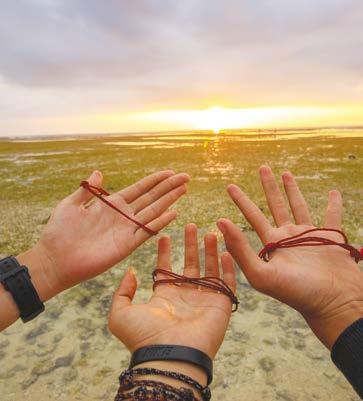
Complete the sentences using the appropriate conjunctions.
1. Young people choose a backpack carefully, ........... they want it to represent their style.
2. Headphones aren’t just for listening to music, ........... to isolate yourself from the world.
3. Phone covers can be colourful .............. very personalised.
4. The young man bought a smart watch, ........... he wants to keep fit.
5. Bracelets can be a fashion accessory, ........... they can also have an emotional meaning.
6. Sunglasses are sometimes used ........... there is no real need to protect your eyes from the sun.
7. Young people follow the fashions of influencers, ........... they change accessories very often.
8. The scarf is a useful way of keeping warm, ........... it’s chosen above all to give an original touch to a look.
Accessories such as colourful earphones or phone lanyards* are examples of the latest fashions. Practicality and design make items original, but not too original – choosing the right accessory is about being different but only up to a certain point.
and beliefs. And it’s not just the items themselves, it’s also how they’re worn. Sunglasses, for example, are sometimes worn even when they’re not really necessary as a fashion choice and, for some, a way to boost* confidence. Want to understand where a latest trend has come from?
Well, many come from celebrities and influencers, who serve as modern style icons for young people who like to emulate* them. Next time you are out and about, or when travelling, keep an eye open for the kinds of accessories you see around you. Every accessory can be a gateway into understanding the complex, ever-changing world of youth identity and culture.
accessories: objects added to make another thing better connected: part of a shared experience status: place / position in a social group customised: made / changed to meet the owner’s needs / desires gadgets: small mechanical / electronic device immerse: have your attention held by something ear buds: small earphones worn inside the ears
chunky: thick and heavy layered: different levels placed one on top of the other tokens: small objects that represent something else, e.g. a friendship outfit: clothes, shoes etc. chosen to wear together boost: (here) improve, grow emulate: try to be the equal of lanyard: string worn round the neck to hold phone / identity card etc.

Following on from the earliest tags –graffiti signatures* – that appeared on the New York subway from the 1940s to the 1960s, street artists today use a variety of styles, including free-hand* spray-painting*, stencils*, mosaics* and murals. The resulting art may carry political, social, or cultural messages or simply be decorative. Since the 1980s, graffiti has become more accepted as an art form. In fact, the work of some graffiti artists sells for millions of dollars in the traditional art markets of the world. But while street art is increasingly displayed in museums and galleries, and used by luxury brands in their advertising, it’s not lost its roots in protest and resistance.
New York is the birthplace of modern graffiti. In this city three districts are most closely associated with this exuberant* art form. The Bronx is where street art took off in the 1970s. This is also where hip-hop culture began. Here graffiti was the visual expression of hip-hop music, culture and fashion. The Lower East Side (LES) was the home of legendary street artists Jean-Michel Basquiat (known as SAMO) and Keith Haring. Their
Street art originated away from traditional art galleries, and makes use of public areas such as walls, buildings, walkways and other urban spaces. Unlike traditional art, street art is almost always unauthorised*, and may in some cases even be illegal. It has its roots in anti-establishment* subcultures and cultural protest. Street art asks questions about what is art and what is public space.
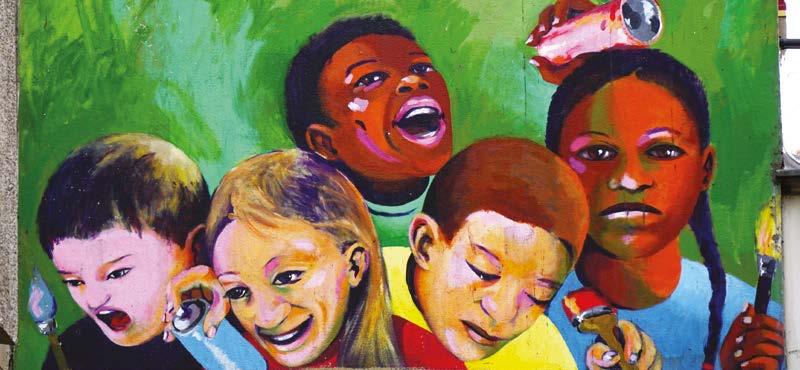

Street art in Paris is focussed in the areas of Belleville, Rue Oberkampf and Canal St Martin. Here you will find the work of anonymous* artists Invader – their mosaics are inspired by the 1970s video game Space Invaders – and JR, with their huge, close-up portraits in a photo-realist style.
work was a critique* of both poverty and gentrification – a process where poor areas of cities get developed, and become too expensive for the original inhabitants to live in – and, for Haring, a way to raise awareness of AIDS. Their style was so instantly recognisable that it was soon taken up by art galleries and now sells for a lot of money. In Harlem,
The Berlin Wall is an iconic setting for alternative street art, where many artists have left their mark. Neighbourhoods such as Friedrichshain and Kreuzberg are known for their colourful and challenging murals.
London has always been quick to follow trends from across the Atlantic. New York-style tags soon spread across the city’s buildings, railway sidings* and trains. Then, in the 2000s, stencil street art started appearing mainly centred around Shoreditch in the east of the city. This work was visually clever, often funny
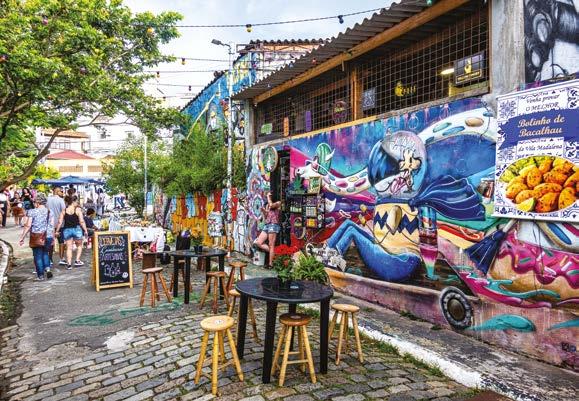
the third of our NYC districts, graffiti is closely linked to Black identity, civil rights, local heroes and music. Here tags are the main style. Tags are the signatures or nicknames of local artists. They’re used to mark territory and create an identity. They’re done quickly, have a unique style and are found everywhere from walls to trains.
1. Shoreditch
2. NYC Subway
Shepard Fairey and other local artists. It’s become a fashionable, high-tech area and is one of the most famous street-art hubs in Europe.
Os Gêmeos are identical twins Otávio and Gustavo Pandolfo – their artist name is Portuguese for ‘the twins’. They were born in Sao Paulo in the mid 1970s and were also

and strongly political. It was the work of the famous, but still Banksy. Born in Bristol but working mainly in London, his themes are anti-war, anti-capitalism and anti-consumerism. He explores innocence and corruption, as well as human rights and the difficulties facing refugees.
Today, along with the works of Banksy, Shoreditch is home to work by Stik,
a. Anti-capitalist and pro-peace, examines themes of innocence and corruption
b Giant human figures with yellow skin on colourful backgrounds
c. Origin of tags, developed during the midtwentieth century
d. Centre of civil rights protests and celebration of Black identity
e. Cool, high-tech street art hub
f. Home of legends Jean-Michel Basquiat and Keith Haring
Create a sketch or write a description of your ideal mural inspired by a social theme that is close to your heart. Explain in a few lines what it represents and where you would place it in your city.
influenced by the hip-hop graffiti culture of New York, but they’ve developed their own distinctive style with a strong Brazilian flavour. They’re best known for large murals of human figures with yellow skin, often in colourful, dream-like and surreal* settings. Although their work is often fun and playful, like Banksy and other street artists, it’s rooted in protest, specifically wealth inequality and corruption*. But they say that their main aim is to bring more art into public spaces and they want their art to help people access the world of the imagination that can be too easily forgotten. Their work is a portal into storytelling and magic.
unauthorised: done without permission
anti-establishment: against people with political and economic power
signature: way you sign your name
free-hand: done without special equipment, i.e. just using your hand
spray-painting: using paint in pressurised cans
stencil: material (card, plastic etc.) with design cut out of it
mosaic: picture made with
small pieces of glass, stone or ceramic exuberant: full of energy critique: (noun) critical look at something railway sidings: short track where trains are left when not in use
surreal: strange, unbelievable corruption: when people in power take money or use their position for themselves anonymous: whose real name and identity are not known
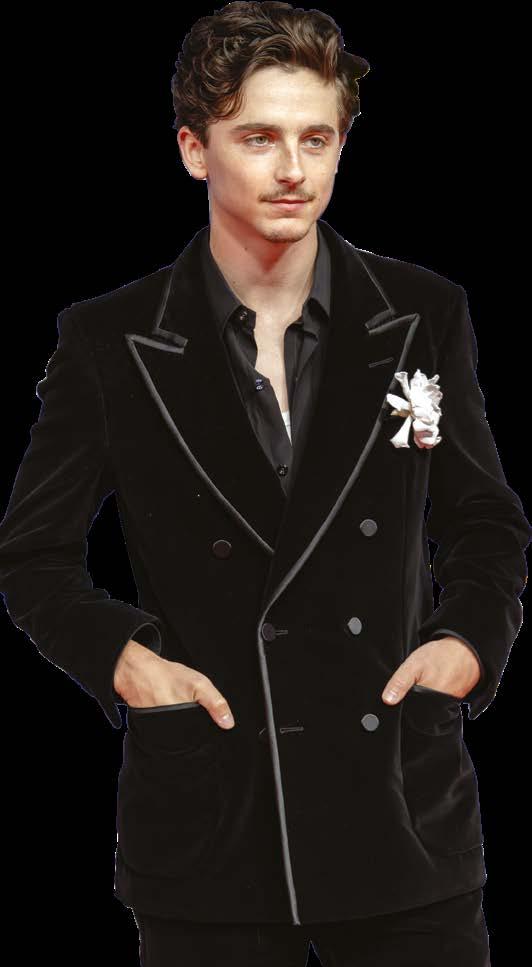


would you like to find out about?
• interesting facts about the city
• something about its history
• activities you can do
• what you can see and visit
• what you might eat at lunchtime
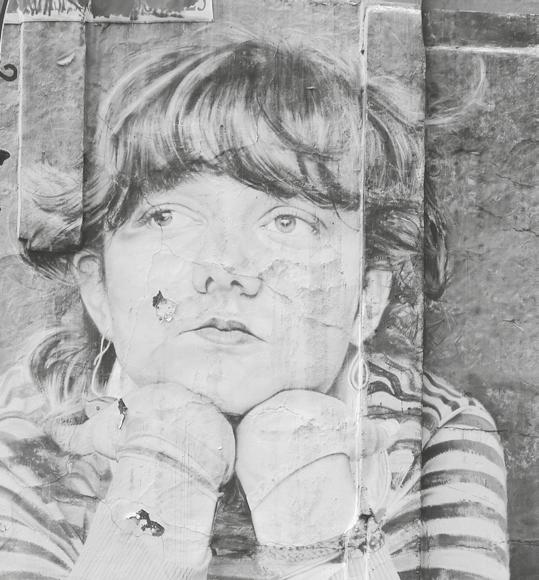
Answers
• what you can eat at breakfast
• what impression a visitor would get of the city
Your works often have a message: what do you want to communicate to
Have you had any legal problems or criticism as a result of your street art?
What do you think of street art as a form of protest?
Which work are you most attached to and why?
The answers are at the bottom of this page.
P 2 T/F: 1T, 2F, 3T, 4F, 5F, 6T. P 4-5 Using your own words where you can, write the meaning of these words in English. (suggested answers) 1 Tenochtitlán – this was the Aztec name for Mexico City; 2 Huitzilopochtli was the Aztec god of war and the sun; 3 Tlaloc was the Aztec god of rain and fertility; 4 Nahuatl was the pre-conquest language of the Aztecs; 5 a barrio is a district / part of a city; 6 chinampas are gardens, made from reeds, that float above the lake; 7 Chilangos is a nickname people from Mexico City sometimes call themselves; 8 tamales are steamed dough made from maize flour and filled, eaten at breakfast; 9 atole is a breakfast drink made from cornflour, water, vanilla and cinnamon; 10 Casa Azul is the blue house, the home of artist Frida Kahlo. P 6-7 Find the odd one out. 1 human species, 2 physical, 3 Italy, 4 lunar, 5 environment, 6 Myaku-Myaku. Create your own pavilion. Own answers. P 8-9 Fill in the table. Own answers. Answer the questions about your exercise habits – you can include any time you move, such as walking to the bus, or any sport you do. Own answers. P 10-11 Complete the sentences using the appropriate conjunctions. 1 because, 2 but, 3 and, 4 because, 5 but, 6 even when, 7 so, 8 but. Inside the text… 1 identity, 2 status, 3 customised, 4 immerse, 5 significance, 6 current. P 12-13 Match. 1e, 2c, 3b, 4f, 5d, 6a. Your Street Art. Own answers. P 14-15 Solve the anagrams from this issue’s Report: 1 Yumeshima, 2 Ocean Farm, 3 BioSuit, 4 Digital Savannah, 5 Expo, 6 Pavilion. Complete the character fact file. 1 Hal, 2 French,
